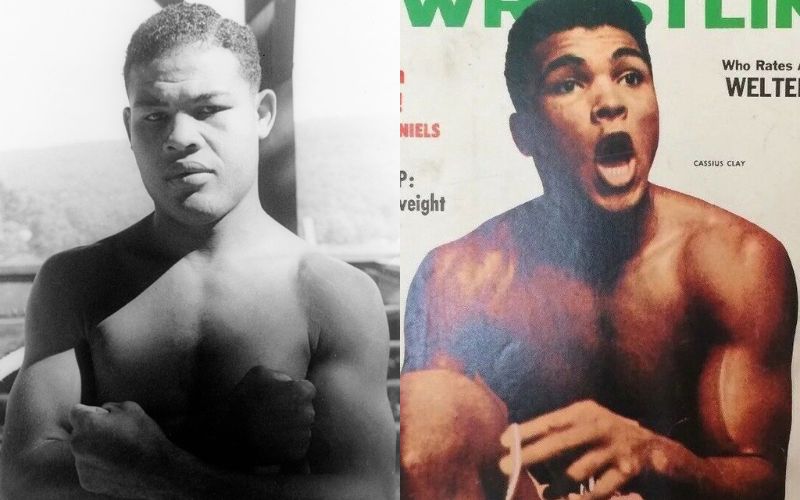In the annals of boxing history, few questions spark more debate than this: Who was the greater heavyweight champion, Joe Louis or Muhammad Ali? These two giants of the ring, each a legend in his own right, dominated different eras with distinct styles and personalities that left an indelible mark on the sport.
Joe Louis and Muhammad Ali, both legendary heavyweight champions, excelled in different eras with distinct styles. Comparing them is challenging due to their differing contexts and boxing styles, making it subjective to declare one as definitively better than the other.
This blog post dives into the heart of this timeless debate, dissecting their careers, analyzing their skills, and imagining a world where these two champions could meet in the ring.
Career Achievements and Historical Context
Joe Louis and Muhammad Ali are more than just boxing legends. They are key figures in history, both inside and outside the ring.
Joe Louis broke down barriers in a divided America during the 1930s and 1940s, while Muhammad Ali became a symbol of change and courage in the 1960s and 1970s. In this section, we’ll explore their incredible careers and the times they lived in.
Joe Louis’ Career Highlights
Joe Louis, born May 13, 1914, in Lafayette, Alabama, remains one of the most iconic figures in the history of boxing. Known as the “Brown Bomber,” Louis redefined the heavyweight division with his formidable presence and unmatched skill.
His career, spanning from his debut in 1934 to his retirement in 1951, is marked by numerous achievements and historic moments that have cemented his legacy as one of the greatest boxers of all time.
Early Career and Rise to Prominence
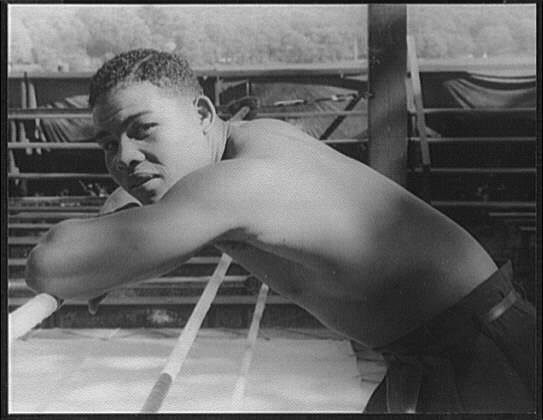
Louis made his professional debut at the age of 20 in July 1934, showcasing an impressive combination of power and technique from the onset. He quickly gained recognition for his knockout power, establishing himself as a formidable contender in the heavyweight division.
World Heavyweight Champion
On June 22, 1937, Louis ascended to the pinnacle of boxing by knocking out James J. Braddock in eight rounds in Chicago, claiming the world heavyweight championship. His reign as champion, lasting until March 1, 1949, is noted for its longevity and dominance, marking the longest tenure in any weight division at that time.
Record and Notable Victories
Louis’ career record is remarkable: 66 wins, 52 of which came by knockout, with only 3 losses. His title fight record stands at an impressive 25 wins, with 21 of those being knockouts, against just 2 losses.
Notable victories that highlight his career include knockouts of heavyweights like Primo Carnera, Max Baer, Jack Sharkey, and Jim Braddock.
One of his most celebrated victories was against Max Schmeling in a rematch in 1938, where Louis avenged his earlier defeat with a first-round knockout, a fight that carried significant symbolic importance during the pre-World War II era.
Contribution During World War II
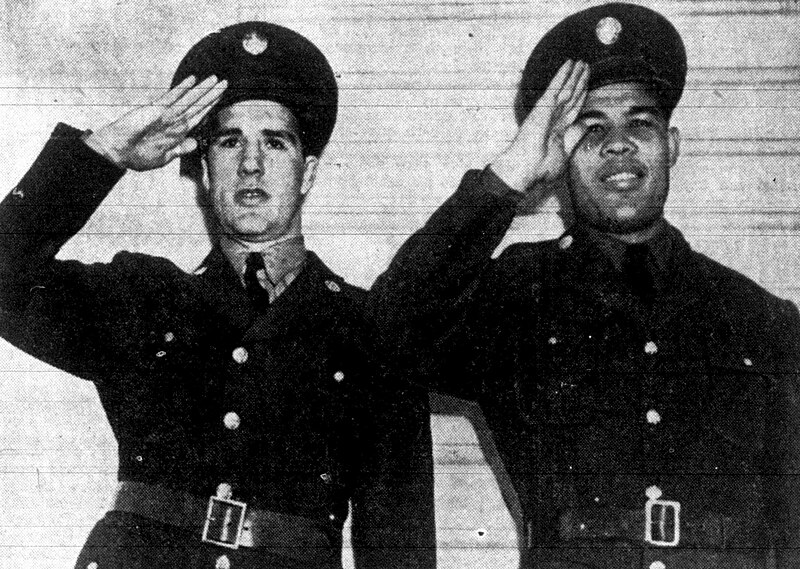
Louis’ boxing career was interrupted by his service in the U.S. Army from 1942 to 1945, during which he also participated in exhibition matches to boost the morale of the troops. His service no doubt limited the number of title defenses he could have achieved during these prime years.
Legacy and Impact
Louis defended his title 25 times, more than any other champion in any division, a record that speaks volumes about his dominance and durability. His influence extended beyond the ring, as he became a symbol of hope and strength, especially among African American communities during a time of racial segregation in the United States.
Muhammad Ali’s Career Highlights
Muhammad Ali, born on January 17, 1942, in Louisville, Kentucky, stands as one of the most celebrated and influential athletes in the history of sports. Known for his charismatic personality, exceptional boxing skills, and social activism, Ali’s career spanned over two decades, leaving an indelible mark on the world of boxing and beyond.
Early Achievements and Professional Debut
Ali made his professional debut at the age of 18 in October 1960, quickly distinguishing himself with his unique style, speed, and reflexes. He first rose to prominence as a light heavyweight Olympic gold medalist in 1960.
Winning the World Heavyweight Championship
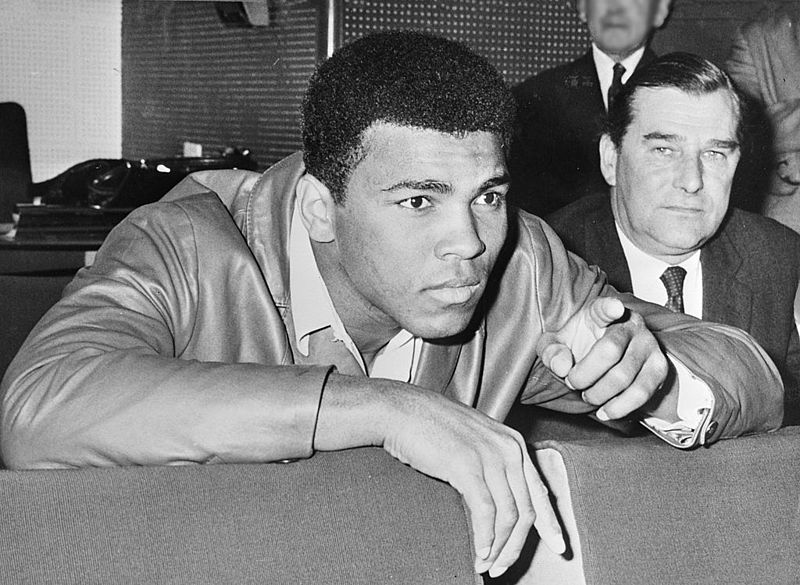
Ali’s rise in the heavyweight division was meteoric, culminating in winning the world heavyweight championship on three separate occasions, a feat unprecedented at the time. His record of W56 (37 by knockout)-L5-D0, with a title fight record of W21 (14 by knockout)-L4-D, underscores his dominance in the ring.
Notable Victories and Rivalries
Ali’s career is marked by several legendary fights and victories, including his bouts against Sonny Liston, where he won the world heavyweight title for the first time and successfully defended it with a dramatic knockout in the rematch.
He faced Joe Frazier in three epic battles, with their third fight, the “Thrilla in Manila,” being one of the most famous boxing matches in history.
Ali’s victory against George Foreman in the “Rumble in the Jungle” in 1974, where he regained the heavyweight title, is considered one of the greatest upsets in boxing history.
Impact Beyond Boxing
Ali’s refusal to join the army due to religious and political beliefs led to a controversial three-year hiatus from boxing, during which he became an icon of resistance and change. His return to boxing saw him reclaiming the heavyweight title, further solidifying his status as a legend.
Legacy and Recognitions
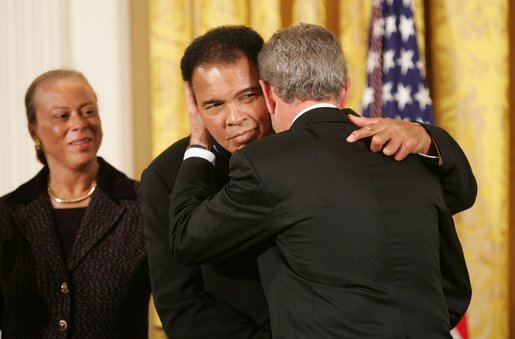
Ali is widely regarded as the greatest heavyweight boxer of all time, with accolades from The Ring, The Associated Press, and ESPN, among others. He was inducted into the International Boxing Hall of Fame in its inaugural class of 1990.
Beyond his achievements in the ring, Ali’s impact as a social activist and cultural icon made him a figure of immense historical significance. We wrote an entire article about Ali’s life after boxing, give it a read if you’re interested.
Comparison of Boxing Skills and Styles
Joe Louis and Muhammad Ali both possess a unique set of skills and styles that set them apart in the sport’s history. This section delves into a detailed comparison of their boxing abilities, dissecting the nuances that define their in-ring personas.
Speed and Movement
A key area of contrast lies in their speed and movement within the ring. While Ali’s foot speed and agility set him apart as a heavyweight, Louis’s powerful and methodical approach made him equally formidable.
Muhammad Ali’s Superior Foot Speed and Agility
Muhammad Ali is often celebrated as the fastest heavyweight ever, a title he earned through his exceptional agility and foot speed. Ali’s movement was more than just physical speed; it was a cornerstone of his fighting style. His ability to dance around the ring with superb footwork and quick reflexes made him elusive and difficult to hit.
Ali’s famous phrase, “float like a butterfly, sting like a bee,” perfectly encapsulates his style. He combined incredible conditioning with a jab that was as fast as a striking snake, making him a unique and formidable opponent.
Against a powerful puncher like Louis, Ali’s speed would be his greatest asset, allowing him to maintain distance and leverage his height and reach advantages.
Joe Louis’s Powerful, Methodical Approach
Joe Louis, while not as fast on his feet as Ali, was nearly his equal in terms of hand speed. When Louis unleashed his combinations, they came with blinding quickness and devastating power.
Louis was known for his technical prowess as a puncher. His movements in the ring, though less flashy than Ali’s, were exceptionally efficient. His small, calculated steps were akin to the swarming tactics of Marciano or Tyson, but with less energy expenditure.
His approach was methodical and precise. Louis’s ability to capitalize on an opponent’s mistakes was unparalleled. He would often use his right hand to parry and counter, effectively negating his opponent’s primary weapons.
Chin and Durability
The discussion of chin and durability in the context of Joe Louis and Muhammad Ali brings an intriguing aspect to their comparative analysis. When comparing the two, it’s evident that both fighters had extraordinary abilities to withstand heavy blows, each in their unique way.
Muhammad Ali’s Resilience
Muhammad Ali’s chin is often celebrated as one of the best in heavyweight history. His ability to absorb powerful blows from some of boxing’s most dangerous sluggers was a testament to his physical toughness.
Ali’s endurance was further proven in his bouts against fighters like Joe Frazier and George Foreman. Despite facing significant punishment, particularly in the infamous “Thrilla in Manila,” Ali demonstrated a remarkable ability to withstand damage and continue fighting effectively.
Joe Louis’s Durability
Joe Louis’s chin, while perhaps not as frequently tested due to his dominant style, was also incredibly resilient. Louis took numerous powerful shots from respected heavyweights like Max Schmeling but continued to fight effectively.
His ability to withstand punishment was not just physical but also mental. Louis’s heart and dedication, comparable to Ali’s, were evident in his willingness to persevere through adversity.
Louis’s approach to absorbing blows was different from Ali’s. While Ali might have relied more on his agility to avoid punches, Louis was able to take hits and still deliver powerful counter-attacks. His strategy was often about enduring the opponent’s offense and looking for opportunities to land his own decisive punches.
Counter-Punching and Feinting
Ali’s defensive technique was unique but came with certain vulnerabilities. His style relied heavily on his physical attributes like speed and reflexes rather than traditional defensive tactics.
Ali often leaned away from punches instead of blocking or parrying them. This approach, while successful due to his extraordinary reflexes, was risky and considered unorthodox by traditional boxing standards.
His tendency to hold his hands low and lean back made him vulnerable to fighters with quick hands and solid left jabs, as observed in his fights with Ken Norton and Doug Jones. As Ali’s physical abilities declined, these technical deficiencies became more apparent, leading to difficulties in later fights.
In a hypothetical matchup, Louis’s skill in feinting and counter-punching would pose a serious challenge to Ali. Louis’s ability to disrupt Ali’s rhythm and exploit his defensive gaps could shift the momentum in Louis’s favor.
In-Ring Strategies and Potential Match-up Analysis
This section delves into the tactical minds of these two boxing legends, analyzing how their signature styles and approaches could have interacted in a potential match-up.
Ali’s Potential Strategies Against Louis
In a hypothetical bout between Muhammad Ali and Joe Louis, Ali’s strategies would likely focus on leveraging his unique strengths and exploiting Louis’s weaknesses. Known for his unconventional approach and exceptional talents, Ali’s game plan would revolve around his speed, range, and endurance.
Utilizing Speed and Range
Ali’s primary advantage lies in his extraordinary foot speed and agility. His ability to move quickly and fluidly around the ring would be crucial in outmaneuvering Louis.
With a height and reach advantage, Ali would likely maintain distance, using his long-range game to keep Louis at bay. His movement wouldn’t just be about evasion; it would be tactical, creating angles and openings for attacks.
The use of fast lateral movements and feints would play a significant role. Ali’s agility could disrupt Louis’s timing and rhythm, making it difficult for Louis to land his powerful shots.
Ali’s jab, known for its speed and sharpness, would be a key tool. He would use it not only to score points but also to control the pace and distance of the fight. Quick and sharp 1-2 combinations would allow Ali to strike effectively without staying in Louis’s range for too long.
Emphasis on Endurance and Avoiding Power Shots
Recognizing Louis’s knockout power, Ali’s strategy would include a strong emphasis on endurance and avoiding Louis’s heavy punches. His legendary stamina would be a vital asset in a prolonged fight.
Ali’s defensive style, characterized by leaning back and using his hands down approach, although risky, would be part of his strategy to dodge Louis’s power shots. This would require precise timing and spatial awareness to be effective.
The plan would involve staying off the ropes, as Ali would want to avoid getting trapped and subjected to Louis’s punishing body shots and powerful combinations. Keeping the fight in the center of the ring would be preferable.
Counter-Attacking and Tactical Fighting
Ali’s psychological tactics, including his famous trash-talking and showboating, would aim to frustrate Louis and throw him off his game. By taunting Louis, Ali could provoke him into making mistakes or becoming overly aggressive.
Ali would look for opportunities to counter-attack, especially as Louis pushes forward. By using straight right-hand counters and exploiting Louis’s aggressive moments, Ali could land significant strikes.
The fight would likely involve Ali baiting Louis into attacks, then countering with speed and precision. Ali’s ability to counter offensively after evading Louis’s flurries would be crucial in scoring points and potentially hurting Louis.
Louis’ Potential Strategies Against Ali
Louis’s approach would likely center on his strengths as a power puncher and his skill in inside fighting. His strategies would be designed to neutralize Ali’s advantages in speed and movement.
Cutting Off the Ring and Pressuring Ali
Louis, renowned for his power and precision, would focus on cutting off the ring to limit Ali’s movement. By strategically moving and positioning himself, Louis would aim to trap Ali against the ropes or in corners, reducing Ali’s space to maneuver.
The goal would be to apply constant pressure, forcing Ali into a more stationary fight where Louis’s power could be more effectively deployed. This approach would be about patience and timing, steadily closing the distance while maintaining a strong defensive guard.
Louis’s experience and composure in the ring would aid him in executing this strategy without getting frustrated or overcommitting against a highly mobile opponent like Ali.
Targeting the Body and Exploiting Ali’s Leaning Defense
Knowing Ali’s tendency to lean back and lower his guard, Louis would likely target the body to wear him down. Persistent body shots could slow Ali’s footwork, making him more vulnerable to power punches.
Louis’s ability to throw powerful and accurate combinations to the body and head would be crucial. A steady diet of body shots would not only sap Ali’s stamina but also potentially draw his guard down, opening opportunities for head strikes.
The strategy would include exploiting moments when Ali leans or pulls back from punches. Louis, with his quick and powerful hands, could capitalize on these moments, especially with his potent left hook, a punch that Ali was susceptible to.
Maintaining a Technical and Economical Approach
Louis’s technical proficiency and economical movement would be key in this matchup. He would need to be efficient with his energy, avoiding wild exchanges or getting drawn into Ali’s pace.
Recognizing Ali’s vulnerability to counter jabs and hooks, Louis would look to counter punch between Ali’s punches, especially when Ali dropped his right hand.
His focus would be on accurate timing and precision rather than volume, ensuring that each punch thrown had the potential to do significant damage. The idea would be to pressure Ali consistently while waiting for the right moment to land decisive blows.
Hypothetical Match-up Scenarios
A fight between Joe Louis and Muhammad Ali would be a clash of two boxing titans with very different fighting styles. Let’s explore how this dream match might have played out.
Early Rounds: Testing the Waters
At the start, Ali would probably use his fast feet to keep his distance, moving around Louis and quickly throwing jabs. He’d be focused on staying away from Louis’s heavy punches. Louis, more steady and powerful, would try to corner Ali, cutting off his escape routes. He’d use his jab not just to hit Ali but to figure out his moves, waiting for a chance to land a big punch.
In these rounds, Ali might score more with his fast hits, while Louis would be studying Ali’s style, looking for a weak spot.
Middle Rounds: The Fight Heats Up
As the rounds go on, Louis’s strategy of hitting Ali’s body could start to slow Ali down. This would make it easier for Louis to land stronger punches. Ali might ramp up his mind games, trying to throw Louis off with taunts and tricks.
Louis, keeping his cool, would stick to his plan, jabbing and watching for an opening to use his famous right hand. He’d have to be patient and not get caught up in Ali’s showmanship.
Late Rounds: Endurance and Power
In the final rounds, the fight would really test their stamina. If Louis’s body hits worked, Ali might not be able to move as quickly, giving Louis a chance to hit harder. Ali, known for lasting long in fights, could still be moving pretty well, trying to outsmart Louis and keep away from him.
Louis might get more aggressive, knowing he needs to make a big move to win. He’d be trying to trap Ali and go for a knockout.
What Could Happen
One way this could end is with Ali dodging Louis’s punches all fight, scoring points and winning by decision. Or, Louis could catch Ali in the later rounds with a series of strong punches, possibly leading to a knockout. There’s also a chance the fight could be really close, with Ali winning early rounds and Louis coming back strong later, making it hard to guess who’d win.
The winner would depend on how well each could stick to their plan and handle the other’s skills.

